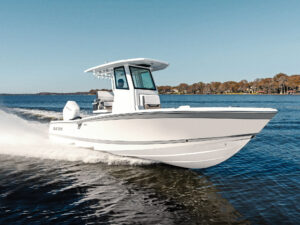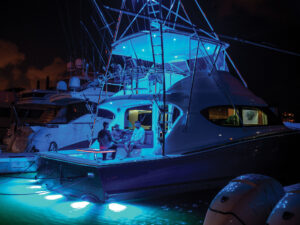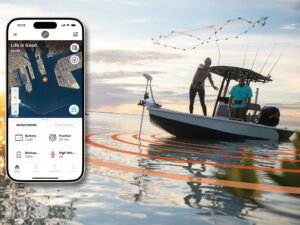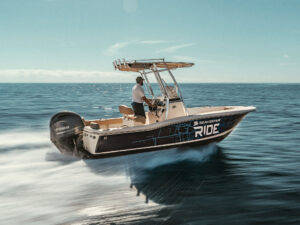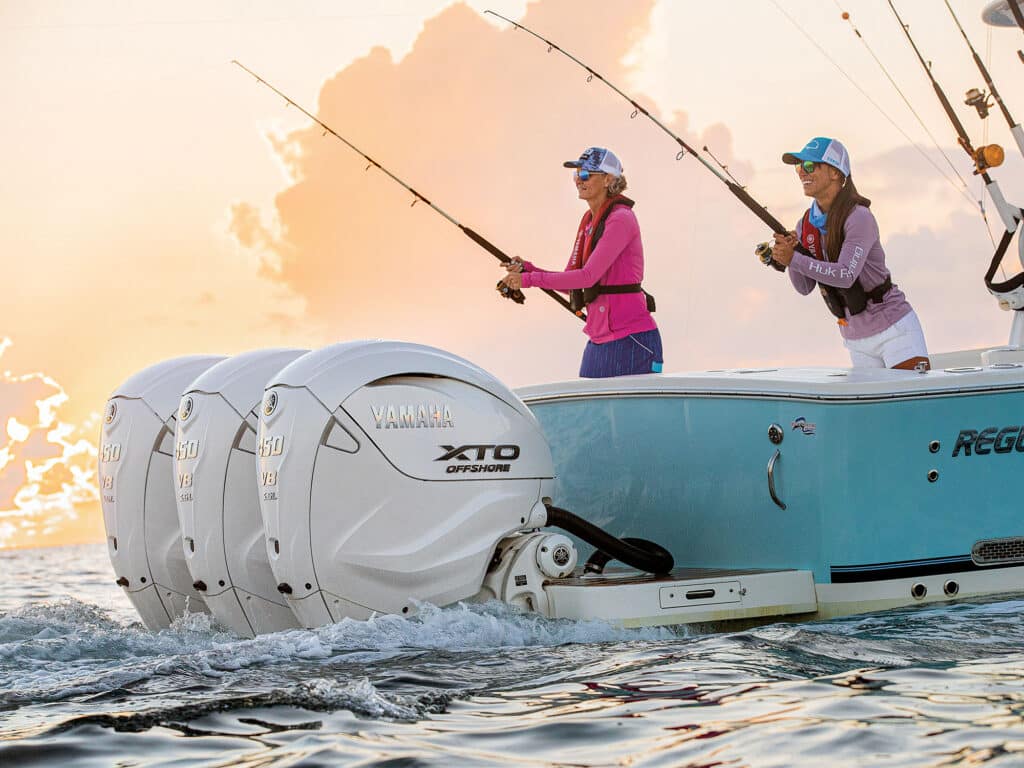
When you think of “power” in the context of today’s outboard engines, you might think in terms of horsepower or torque. But there’s another kind of outboard power, one that ranks increasingly important to saltwater fishing: electrical charging power from the engine alternator.
Today’s fishing machines come packed with electrical equipment, including multiple livewell pumps, marine electronics, electric trolling motors, bow thrusters, air-conditioning systems, gyrostabilizers, jack plates, shallow-water anchors, anchor windlasses, and chiller plates, as well as audio systems and galley amenities, such as microwaves, electric grills, refrigerators, freezers and more. All told, they create extraordinarily high electrical demands, and that’s why outboard brands such as Mercury, Suzuki and Yamaha have ramped up alternator output on their outboards, particularly with the bigger models.
Charging on the Fly
Between trips, onboard battery chargers plugged into household and shore-power outlets are used to replenish and maintain battery state of charge. But what about when you’re out fishing where you cannot plug in and charge up?
Traditionally, onboard generators powered by internal combustion engines have served to deliver the electrical power necessary while at sea. But these can be noisy, sometimes finicky and smelly. They might also require a separate fuel supply. Today, however, the new breed of higher-output outboard alternators provides an alternative to onboard generators for powering onboard equipment.
One of the most notable examples of this trend is found in the updated Yamaha Marine XTO Offshore V-8 outboard, which delivers 450 hp and boasts significant charging power thanks to a three-phase, simultaneous charging system. “Using phase angle control (PAC) componentry to create a super-strong magnetic field, the XTO Offshore 450 produces up to 96 net amps per engine (at 12 volts),” says David Meeler, new-product introduction manager for Yamaha Marine.
The charging capacity gets even better with multiple outboards because the output is cumulative. “This is what is meant by ‘stackable,’” Meeler explains. That means the total output available to power onboard equipment is net amps multiplied by the number of engines. “In the case of quintuple XTO 450s, that’s 480 amps.”
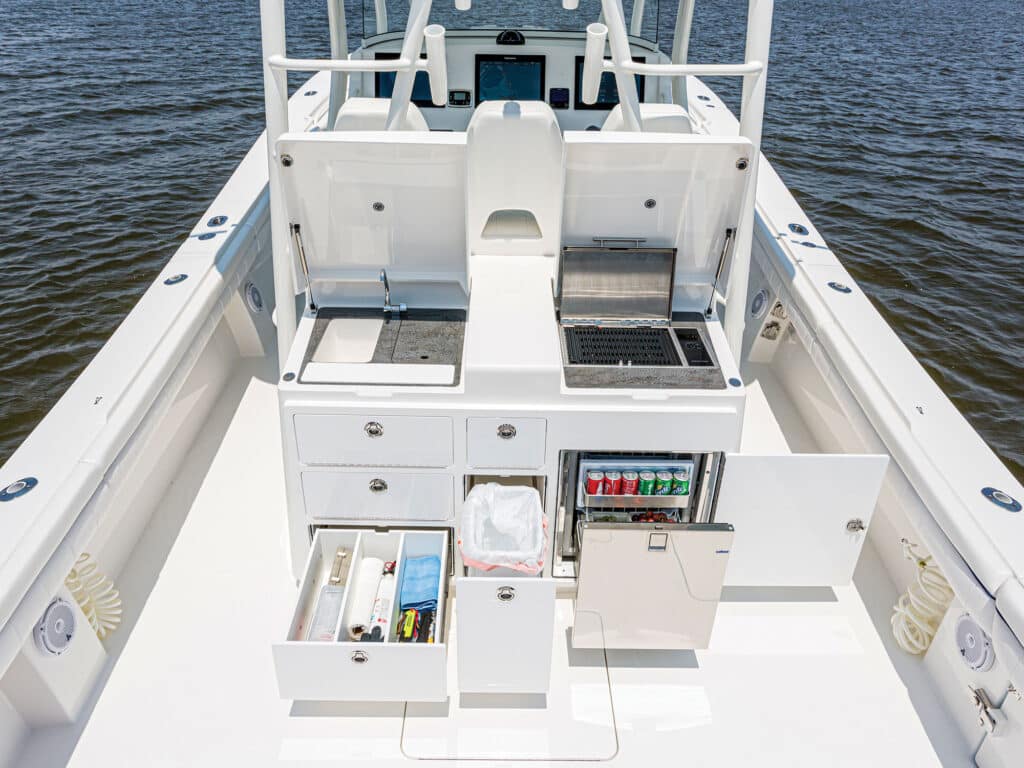
High Output at Low RPM
The ability to deliver high output at relatively low rpm represents a big change from alternators of yesteryear. Older systems needed to rev up significantly before reaching outputs that provide any charging power at all, a characteristic that was not always practical when fishing called for a technique such as slow trolling at low speeds.
Thankfully, that’s changed. With Suzuki Marine’s top-of-the-line DF350 outboard, for example, the alternator produces 80 percent of its 54-amp (at 12 volts) maximum output at a low 1,000 rpm. And like the XTO 450, the Suzuki 350’s charging capability is stackable; for instance, the maximum amp output totals 216 with quad engines.
Mercury Marine has also made big strides in delivering improved outboard charging capabilities, especially with the new 350 and 400 hp V-10 Verado series, as well as the 600 hp V-12 Verado outboards. The standard alternator on these outboards will deliver 150 amps (at 12 volts) of charging power at 1,500 rpm, more than twice that of the older 2.6-liter inline-six Verado, and 30 percent more than the Verado V-8 outboards.
Directing the Charge
As indicated earlier, new alternator systems from major outboard brands prove so powerful that they can even eliminate the need for onboard generators. This is made possible by ancillary systems that redirect outboard charging power to a “house” battery bank (which is dedicated to high-demand electrical equipment) once the engine-starting batteries have reached full charge. With the needs of the starting batteries met, excess amps are sent to the house bank.
Such systems are generally known as automatic charging relays, battery isolators or DC-to-DC chargers. These are available from brands such as Blue Sea Systems and Mastervolt. Yamaha offers a system known as Smart Charging. It too prioritizes charging to the starting bank, keeping it at or very close to 100 percent charged before devoting the entire charge capability to the house bank.
Read Next: Using Lithium Battery Systems for Auxiliary Power
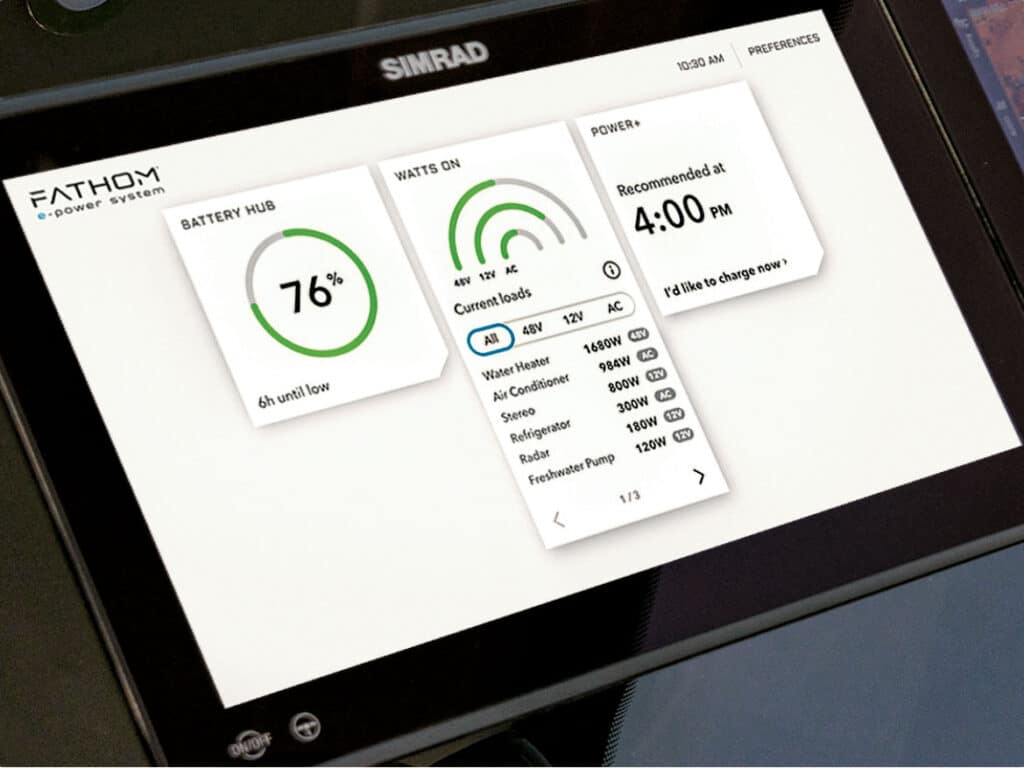
Variable Voltage
While nearly all outboard alternators generate amps at 12 volts (direct current), one outboard alternator system generates amps at 48 volts. It’s optional for the Merc V-10 and V-12 outboards, and is designed to complement Navico’s Fathom e-power system that uses a marine lithium-iron-phosphate house battery bank to replace an internal combustion generator. The system is offered as original equipment on Brunswick boat brands such as Boston Whaler, as well as on some non-Brunswick boat brands. Navico and Mercury are also part of the Brunswick family of companies.
When rpm is up while the boat is at speed, Fathom can bypass the house bank and direct alternator power to 12-volt accessories through a voltage converter. It can also directly power 48-volt appliances and accessories, thus preserving the energy stored in the batteries. What’s more, the system will seamlessly maintain the house bank, which in turn can charge the starting battery bank. The Fathom battery bank also enables charging from a shore-power electrical AC source. The system reaches 48 volts of charging power at a minimum engine rpm of 1,300; below that rpm threshold, the alternator changes at 12 volts.
Power on Demand
Navico estimates that the alternator outputting 48 volts can fully charge the drained house battery bank in a quarter of the time of a Mercury 12-volt alternator if no accessories are in use. If power-hungry onboard systems are in operation, the 48-volt alternator can ramp up the charging power. Yet how much power is available with the 48-volt Fathom system? According to Navico, with a fully charged 24 kWh, 48-volt Fathom battery bank, it’s possible to maintain a light to moderate electrical load for up to four hours without having to recharge or worry about draining the battery bank.
Boating anglers can also use the Mercury outboard alternators to recharge the house bank while the boat is at rest and away from shore power. If the house batteries discharge too low, Fathom will send an alert on the boat’s multifunction display or through the Fathom app. You can then engage Power+ mode through the MFD touchscreen. This will throttle up the outboards to 2,500 rpm in neutral so that the 48-volt alternator charges the house batteries. To safeguard your crew, shifting and steering are electronically locked out, and Fathom will shut down the outboards if carbon monoxide is detected.
With the charging power of today’s outboards, boating anglers have every reason to get
all amped up.


